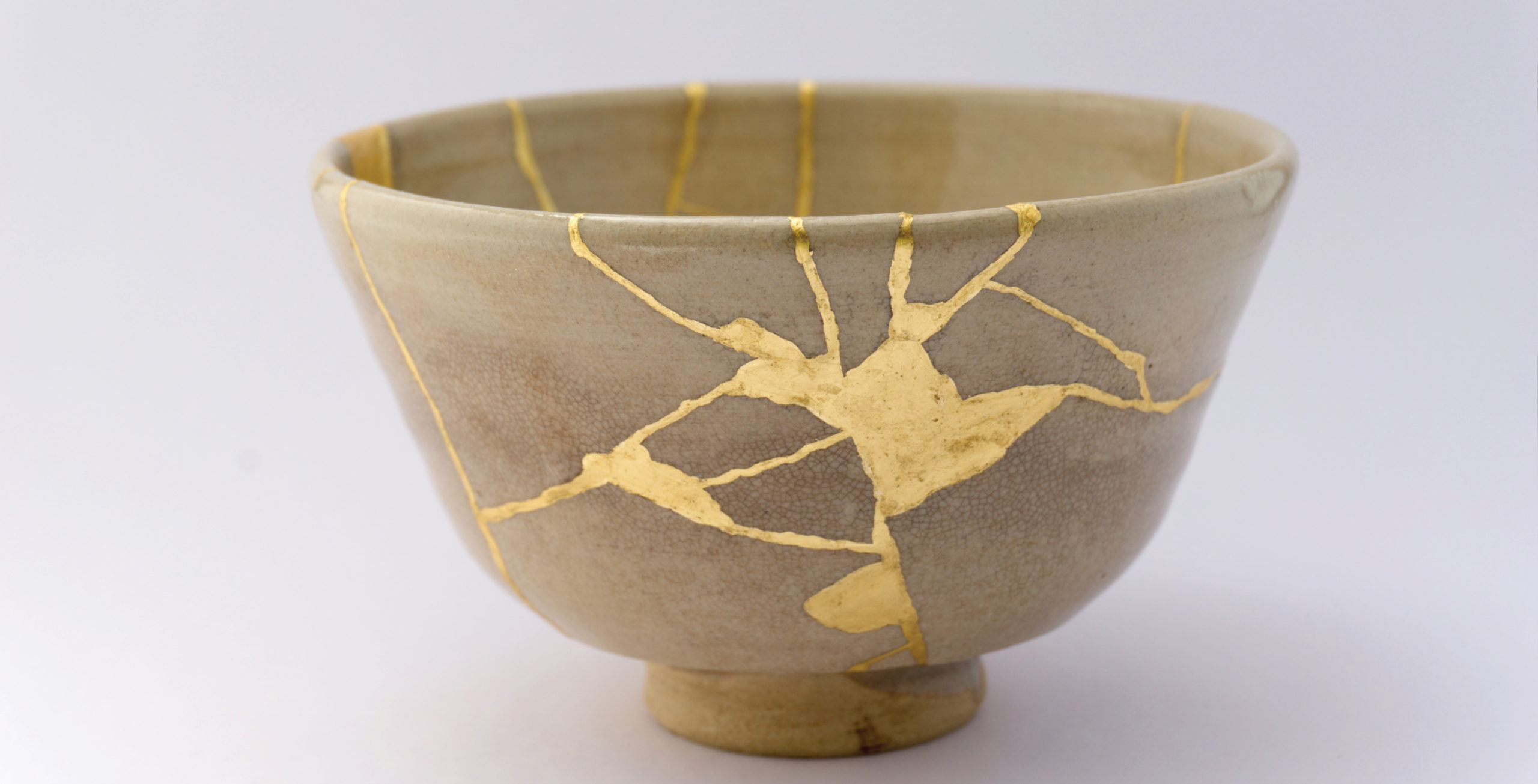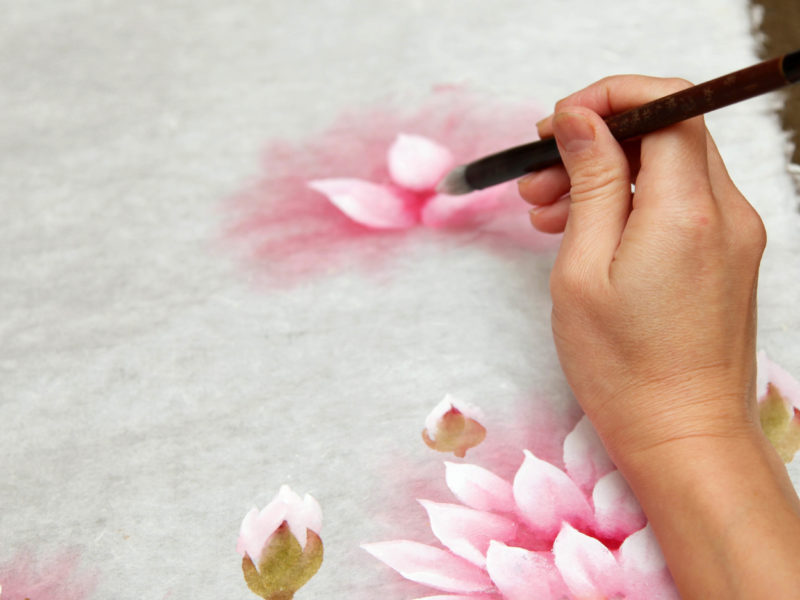
Kintsugi – a powerful visual metaphor for living
Kintsugi is a traditional Japanese art of repairing broken pottery using gold or silver lacquer, resulting in a unique piece that does not hide the damage but instead highlights any cracks and imperfections. Dating back to the 15th century in Japan, it became a common practice among samurai and nobility, who prized the unique beauty of kintsugi-repaired pottery.
Today, its popularity and relevance has grown not only because of its visual appeal but also for the deep philosophical meaning it carries.
The idea of kintsugi is grounded in the Japanese concept of wabi-sabi, which celebrates the beauty of impermanence, imperfection, and incompleteness.
WHY NOT JUST COVER IT UP?
The foundational principle of kintsugi is to honor and value something that appears broken. It makes sense that kintsugi is related to a larger philosophical framework because this process of repair can be a powerful metaphor for situations that we encounter in life.
For example, a relationship will inevitably develop cracks over time. Are we content to discard those relationships, or just use tape or cheap glue or paint over them to make them invisible? Instead, what if we give those cracks our time and attention, repairing them with as much care as possible? If we do, the resulting relationship can transform to be more unique and longer lasting. It is a reminder that whatever may be broken is seldom completely irreparable.
HELPING SHIFT OUR MINDSET
Adopting a kintsugi philosophy can help us to shift our thinking; we can begin to view our scars as a reminder of the challenges we have overcome, developing greater self-acceptance and compassion. Instead of viewing flaws that need to be hidden or fixed, we can begin to see weaknesses as opportunities for growth and transformation.
The art of kintsugi beautifies these very cracks making one relish the uniqueness of the object. Like the cracks in the pottery, our scars and flaws are a part of our story that add depth and character to our lives.
CULTIVATING RESILIENCE
Appreciating the art of kintsugi can help us develop a deeper sense of resilience and strength in the face of adversity.
Kintsugi reminds us of the impermanence of all things – nothing stays forever. Like a piece of pottery, our lives are infused with fragility, setbacks and unpredictability.
The bowl may be broken, but it can be pieced together with more beauty. We too have the chance to pick up the pieces after a failure and learn from the experience to help strengthen our resolve for the future. This mindset equips us to face challenges with resilience and not be fearful of possible cracks or asymmetry!
GROWTH FROM ACCEPTANCE
Acceptance helps us break free from the obsession of chasing perfectionism, which research shows can cause feelings of inadequacy, overwhelm, anxiety and other detrimental effects on mental health and wellbeing.1
Societal norms and our quest to meet our own and others’ expectations have conditioned us towards conformity or taking an approach of ‘fake it till we make it’. Core to the art of kintsugi is authenticity; learning to accept our own flaws and imperfections results in a more positive outlook and a deeper sense of contentment.
ENRICHING CONNECTIONS
Kintsugi also teaches us to value our relationships and connections. Just as the broken pieces of pottery are brought back together with precious metals, our relationships can be strengthened through the challenges we face together. Our shared experiences can bring us closer and create deeper and more meaningful connections with those around us.
When we embrace imperfection and see the possibility in every broken piece, we begin to see the world through a different lens. It also enables us to respect the inherent value in each person and appreciate the potential they carry. This reframing allows us to create and behold beauty in the simple things in our life and find joy in unexpected places.
PARALLELS WITH YOGA
While they may be expressed through different cultural traditions and practices, both kintsugi and yoga have the same guiding principles encouraging us to approach life with compassion, acceptance, honesty, contentment and self-awareness. Both serve as powerful reminders of the resilience and strength that can emerge from the challenges and difficulties we face.
“The world breaks everyone and afterwards, some are strong at the broken pieces.” – Ernest Hemingway.
By Namita Davey, Digital Projects Lead & Mindful Explorer
*References:
https://www.medicalnewstoday.com/articles/323323#How-to-counter-the-harms-of-perfectionism




